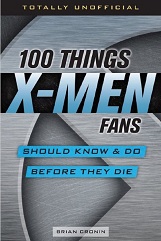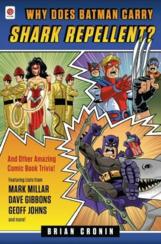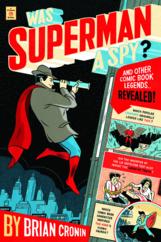Here is the latest in a series of examinations into urban legends about movies and whether they are true or false. Click here to view an archive of the movie urban legends featured so far.
MOVIE/MUSIC URBAN LEGEND: The song “Let it Go” in Frozen saved Elsa from being a villain.
It obviously comes as no surprise to any observers of the film-making process (particularly original stories) that what actually ends up on the screen is a result of a series of edits, evolutions and adjustments to the original story of a film. Just a quick glance at the history of Movie Legends Revealed shows examples like E.T. evolving from a horror film to a family-friendly drama, Godzilla evolving from a giant ape or a giant octopus into his more familiar final form and Darth Vader going from being Anakin Skywalker’s killer to actually BECOMING Anakin Skywalker.
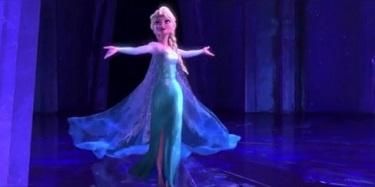
However, Disney’s recent hit film, Frozen, had a particularly interesting inspiration for its evolution – as it turns out, it has a song to thank for altering the villain of the piece, “rescuing” Princess Elsa from being the villain of Frozen. So how did the future hit song “Let it Go” change the entire scope of the film? Let’s find out!
Read the rest of this entry »
Tags: Animated Film, Walt Disney
May 22nd, 2015 | Posted in Movie Legends Revealed, Music Legends Revealed | No Comments
Here is the latest in a series of examinations into urban legends about music and whether they are true or false. Click here to view an archive of the movie urban legends featured so far.
MUSIC URBAN LEGEND: Before becoming a judge on American Idol, Kara DioGuardi was part of a musical hoax along with Dave Stewart.
Kara DioGuardi is likely still best known for being one of the judges on the hit TV series American Idol for two seasons (Seasons 8-9).

but DioGuardi GOT the chance to be a judge based on her successful career as a songwriter, writing many hit songs for a number of pop singers, including more than a few former American Idol contestants.
It was while working as a songwriter in 2004 that she found herself as part of an elaborate, and fairly odd, musical hoax.
Read the rest of this entry »
May 21st, 2015 | Posted in Music Legends Revealed | No Comments
Here is the latest in a series of examinations into urban legends about TV and whether they are true or false. Click here to view an archive of the TV urban legends featured so far.
TV URBAN LEGEND: Sarah Michelle Gellar was banned for life from eating at McDonald’s.
In the first episode of her short-lived CBS sitcom The Crazy Ones, Sarah Michelle Gellar’s ad executive character Sydney Roberts is forced to sing a classic McDonald’s jingle, “You Deserve a Break Today,” in a crowded restaurant to Kelly Clarkson to convince Clarkson to perform the song in a commercial for McDonald’s so that Roberts’ company can retain their lucrative McDonald’s account.

The irony of the moment is that Gellar is supposedly banned for life from McDonald’s after the company sued her when she was just a little girl. Is that true, though?
Read the rest of this entry »
Tags: buffy the vampire slayer
May 20th, 2015 | Posted in TV Legends Revealed | 2 Comments
Here is the latest in a series of examinations into urban legends related to architecture and whether they are true or false. Click here to view an archive of the magazine urban legends featured so far.
MAGAZINE URBAN LEGEND: Men’s Fitness gave Andy Roddick someone else’s biceps for the cover of the magazine.
NOTE: I did this as a Tennis Legend, but it also belongs here. – BC
Former professional tennis player Andy Roddick was (and is) a very fit man.
Just check him out playing tennis without a shirt on…

The guy had no complaints in the body department.
However, when he was featured as the cover model for a 2007 issue of Men’s Fitness, the folks at Men’s Fitness thought that they could make some improvements…
Read the rest of this entry »
May 20th, 2015 | Posted in Grab Bag Legends, Magazine Legends Revealed, Photography Legends Revealed | No Comments
Here is the latest in a series of examinations into urban legends related to architecture and whether they are true or false. Click here to view an archive of the magazine urban legends featured so far.
MAGAZINE URBAN LEGEND: A British magazine introduced into the modern lexicon not only the actual word “magazine,” but also the word “Columbia” to describe America and the slogan “E pluribus unum.”
Before The Gentleman’s Magazine debuted in London in 1731 by Edward Cave, there had never been a successful journal consisting of articles on all sorts of different topics.
But that’s exactly what The Gentleman’s Magazine achieved, and in doing so, Cave actually ended up coining the very TERM “magazine” to describe a journal with different articles on various topics. Magazine meant a storeroom, so this journal was the “gentleman’s storeroom…of knowledge.”
They also coined some other surprising terms and phrases!
Read the rest of this entry »
May 19th, 2015 | Posted in Grab Bag Legends, Magazine Legends Revealed | No Comments
Here is the latest in a series of examinations into urban legends related to architecture and whether they are true or false. Click here to view an archive of the architecture urban legends featured so far.
ARCHITECTURE URBAN LEGEND: There is a law in Washington D.C. that states that no building be as tall as the Washington Monument.
A common “fact” that gets bandied about often when visiting the District of Columbia is that there is a law that states that no building in Washington D.C. be as tall as the Washington Monument.

Is that true?
Read the rest of this entry »
May 19th, 2015 | Posted in Architecture Legends Revealed, Grab Bag Legends | No Comments
Here is the latest in a series of examinations into urban legends about movies and whether they are true or false. Click here to view an archive of the movie urban legends featured so far.
MOVIE URBAN LEGEND: Dumbledore was originally going to be straight in the Harry Potter movies.
I cannot say for sure exactly when the first work of art was translated into a different medium (like what was the first book that was adapted into a play), but I can say with some certainty that whatever it was, there was somebody who liked the original work that said of the adaptation, “The original was better.” That’s the tantalizing risk/reward nature of adapting a popular work into another medium – you enter your work with an established audience (you know people are already interested in the story since it was popular in the other medium) but you also enter your with an established audience that is going to be wary of any changes you make in the story. Now we are nearly a century removed from seeing stuff like the early days of Hollywood saying, “Yeah, Anna Karenina is good and all, but can we give it a happy ending?” but we still see dramatic changes in plots and characters as source material is adapted into films, TV shows and plays (the obsession with giving dark stories happy ending is nothing new – Henrik Ibsen was forced to give “A Doll’s House” an alternate happy ending when it opened in Berlin in 1879 and that was the version that was performed in the United States at the time).
Comedian Ngaio Bealum once spoke about explaining to his young daughter the fact that the “movie universe” and the “book universe” will always be different things when discussing the changes made to the Harry Potter series of novels by J.K. Rowling as they were adapted into a series of films.
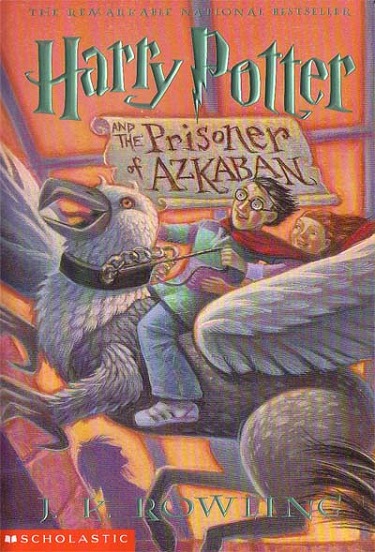
He explained that she just had to accept it for what it is (he called it as “a life lesson for a young nerd”). The Harry Potter films were mostly adapted by screenwriter Steve Kloves, who worked closely with Rowling in the adaptation of the books (Kloves skipped the fourth film in the series, Harry Potter and the Goblet of Fire, but wrote all the other films). Kloves had to make a lot of changes to adapt the books into films (as the books get longer and longer as the series went on, while the films had to stay roughly the same length – except for finally relenting with the extra-long final book in the series, which they split into two films to give them more room to adapt as much of the story as possible) but Rowling has been very supportive of Kloves’ changes, saying of him “Steve’s a compassionate surgeon. We couldn’t make eight-hour-long films, and I’d rather have had him wielding the scalpel than anyone else.”

However, Kloves had another challenge much different than just cutting from the novels – he had to adapt the books while Rowling was still writing new material, so he had to always worry about making plot points in the films that would conflict with what Rowling had planned for the future books. An example that often comes up to demonstrate this concern is that Kloves was intending on having Hogwarts headmaster Albus Dumbledore be revealed to be straight while Rowling always wrote him as gay (only officially revealing that fact after the last book in the series had been released). Is that true?
Read the rest of this entry »
May 18th, 2015 | Posted in Movie Legends Revealed | No Comments
Here is the latest in a series of examinations into urban legends about TV and whether they are true or false. Click here to view an archive of the TV urban legends featured so far.
TV URBAN LEGEND: James Arness is the tallest person ever to be the lead in a television series in the United States.
James Arness played Sheriff Matt Dillon on Gunsmoke, the dramatic program with the most episodes produced in the history of American television.
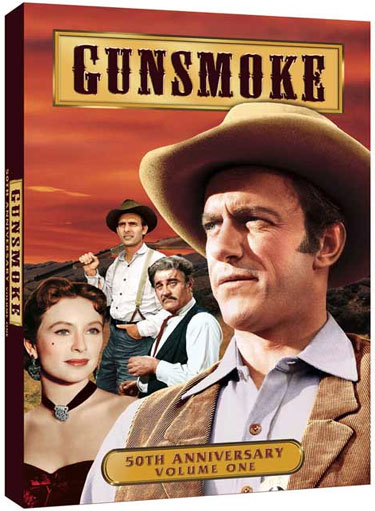
That record does not seem likely to be broken any time soon (Law and Order managed to tie it with 20 seasons but fell nearly two hundred episodes shy of Gunsmoke ), but another mark connected with the program HAS been broken, even though it doesn’t seem to have made its way to the talking points about James Arness.
James Arness was six foot, seven inches tall. He often remarked about how, during World War II, when he was in the infantry, when they did beach landings they would have him go in first to judge the depth of the water (Arness was a highly decorated soldier during World War II and he suffered injuries that bother him to this day).
Check him out with some random people…
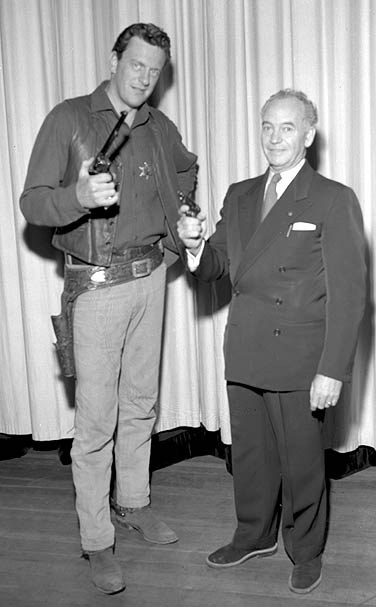
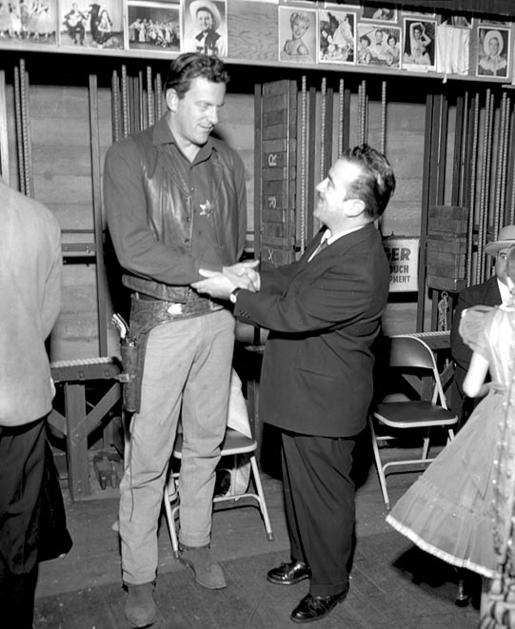
That’s one tall dude!
So as the story goes, he is the tallest person to ever be the lead of an American scripted television series.
Ken Howard, of White Shadow fame, was “only” six foot six inches.
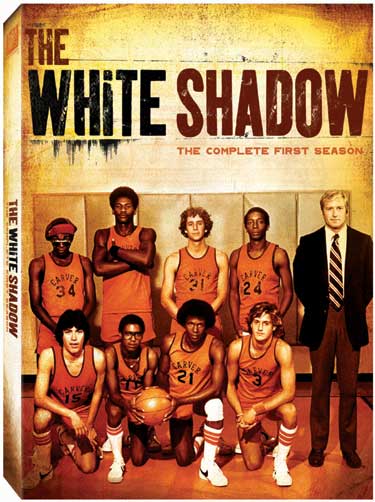
Arness, however, is NOT the tallest actor to star in his own series.
Read the rest of this entry »
May 15th, 2015 | Posted in TV Legends Revealed | No Comments
Here is the latest in a series of examinations into urban legends about music and whether they are true or false. Click here to view an archive of the movie urban legends featured so far.
MUSIC URBAN LEGEND: Not only did C + C Music Factory use a different singer to lip sync to the music sung by another singer for the music video AND some live performances of their hit song “Gonna Make You Sweat (Everybody Dance Now),” they did not even CREDIT the actual singer on the song!
David Cole and, Robert Clivillés were a production duo who put together the “group” C + C Music Factory, quotes because they would just hire different singers according to what they felt the song needed.
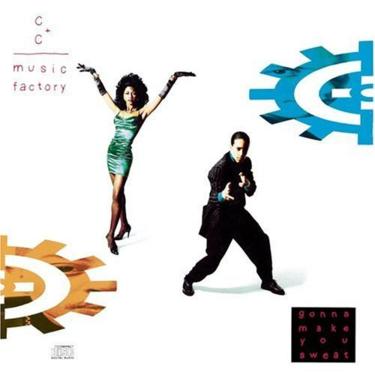
One of their most popular songs was “Things That Make You Go ‘Hmm'”…
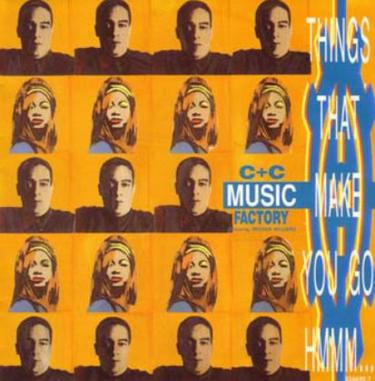
but their biggest hit by far was the title track to their 1991 smash album, “Gonna Make You Sweat (Everybody Dance Now)”…
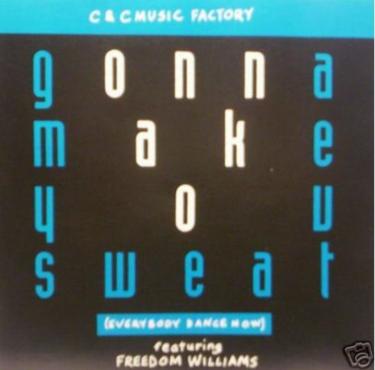
In the popular music video for the song, the booming hook of the female singer singing “Everybody Dance Now” is depicted as this woman, Zelma Davis…
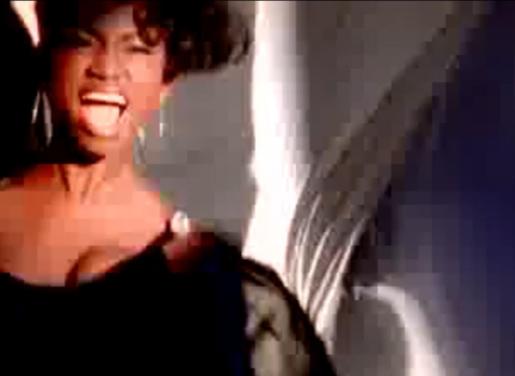
Heck, it even credits her by NAME…

Davis did, indeed, sing on more than a few tracks on the album. However, she did NOT do the singing on this song.
Read the rest of this entry »
May 14th, 2015 | Posted in Music Legends Revealed | No Comments
Here is the latest in a series of examinations into urban legends about movies and whether they are true or false. Click here to view an archive of the movie urban legends featured so far.
MOVIE URBAN LEGEND: Star Wars was originally subtitled “Episode IV A NEW HOPE” as an homage to Flash Gordon cliffhangers and not because of any planned sequels
MOVIE URBAN LEGEND: There was no “Episode IV A NEW HOPE” subtitle in the original Star Wars film because 20th Century Fox had it removed because it would be too confusing for moviegoers.
One of the main reasons why there are so many legends out there about Star Wars is because of the creator of Star Wars, George Lucas. Over the years, Lucas has been quoted saying a number of seemingly contradictory statements about the Star Wars films. Rather than being contradictory, though, I think most of his statements come from him simply having lots and lots of ideas for the Star Wars films and those ideas have changed as time goes by. So when he is asked about them in 1977, he has one idea on how they will go. When he is asked about them in 1978, he has an entirely different idea. In 1979, a different idea and so on and so forth. The problem for fans is figuring out the timeline of when things were said, so that they can realize that two positions weren’t contradictory, Lucas merely changed his mind on them (and then likely changed it again and again). As a result, one of the more confusing pieces of Star Wars lore is exactly when did the the first Star Wars film get subtitled “Episode IV A NEW HOPE”?

There are enough different stories out there that I decided to do TWO Movie Legends on it this week (although both are directly related to each other).
Read the rest of this entry »
Tags: Star Wars
May 13th, 2015 | Posted in Movie Legends Revealed | 9 Comments



















